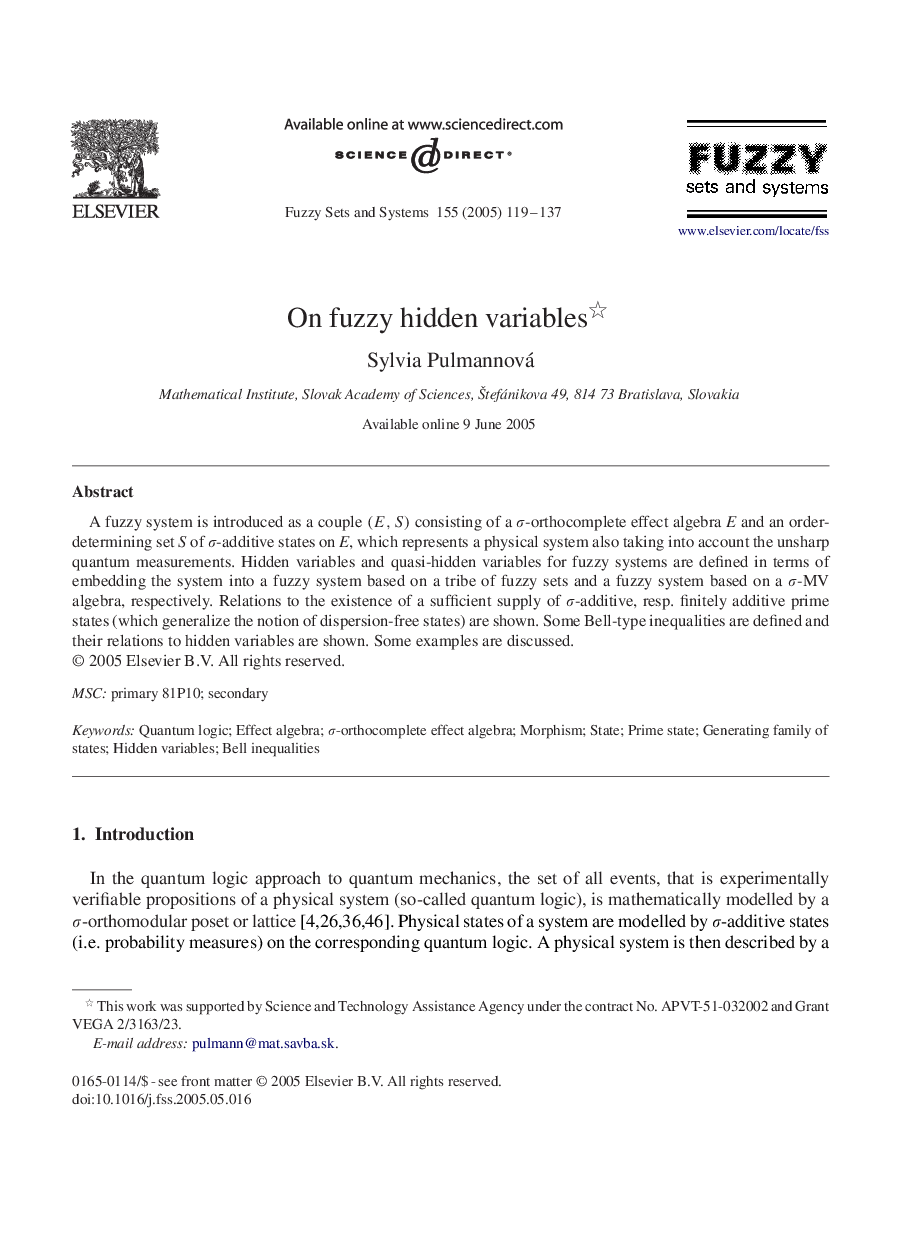| Article ID | Journal | Published Year | Pages | File Type |
|---|---|---|---|---|
| 10323875 | Fuzzy Sets and Systems | 2005 | 19 Pages |
Abstract
A fuzzy system is introduced as a couple (E,S) consisting of a Ï-orthocomplete effect algebra E and an order-determining set S of Ï-additive states on E, which represents a physical system also taking into account the unsharp quantum measurements. Hidden variables and quasi-hidden variables for fuzzy systems are defined in terms of embedding the system into a fuzzy system based on a tribe of fuzzy sets and a fuzzy system based on a Ï-MV algebra, respectively. Relations to the existence of a sufficient supply of Ï-additive, resp. finitely additive prime states (which generalize the notion of dispersion-free states) are shown. Some Bell-type inequalities are defined and their relations to hidden variables are shown. Some examples are discussed.
Related Topics
Physical Sciences and Engineering
Computer Science
Artificial Intelligence
Authors
Sylvia Pulmannová,
